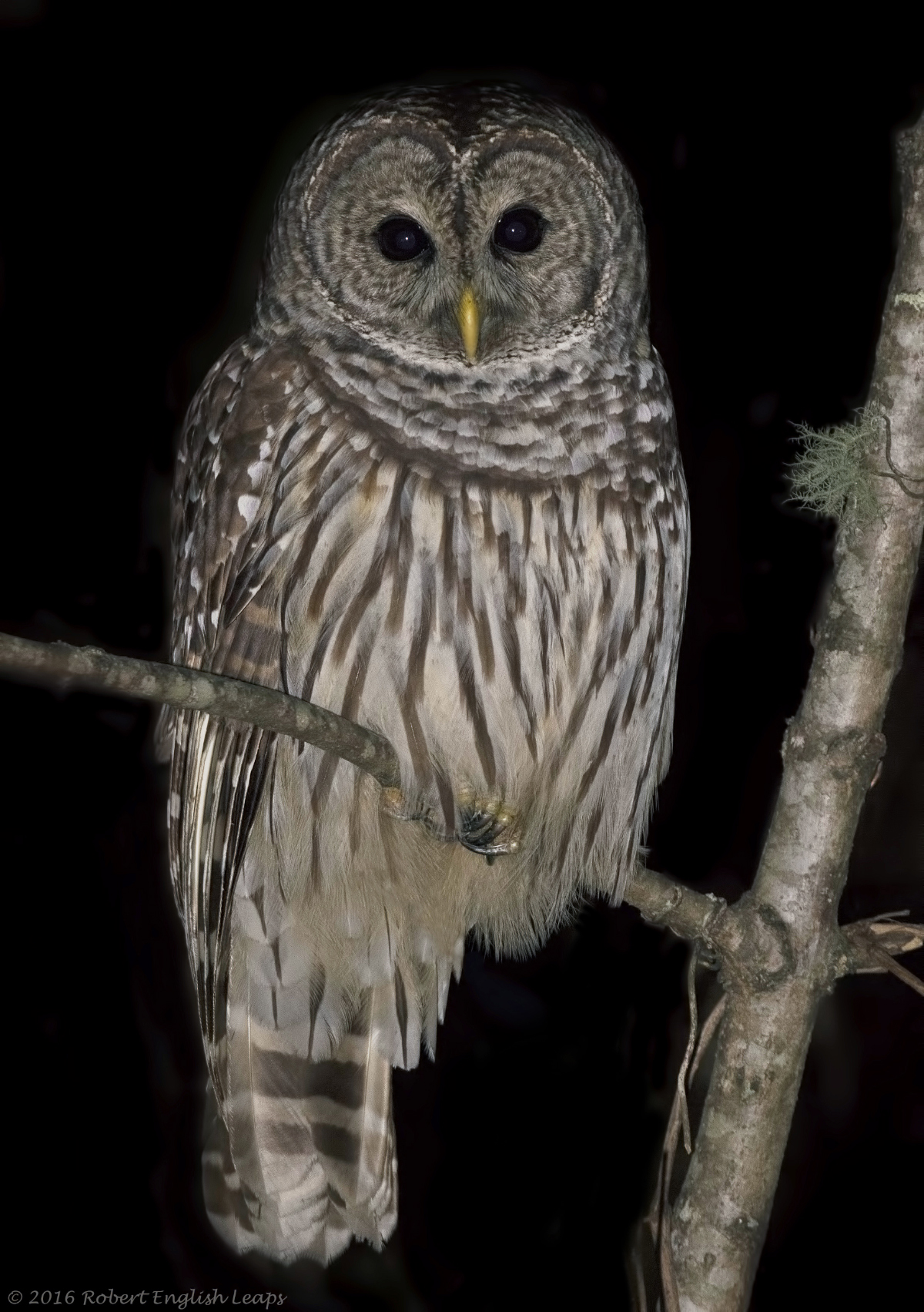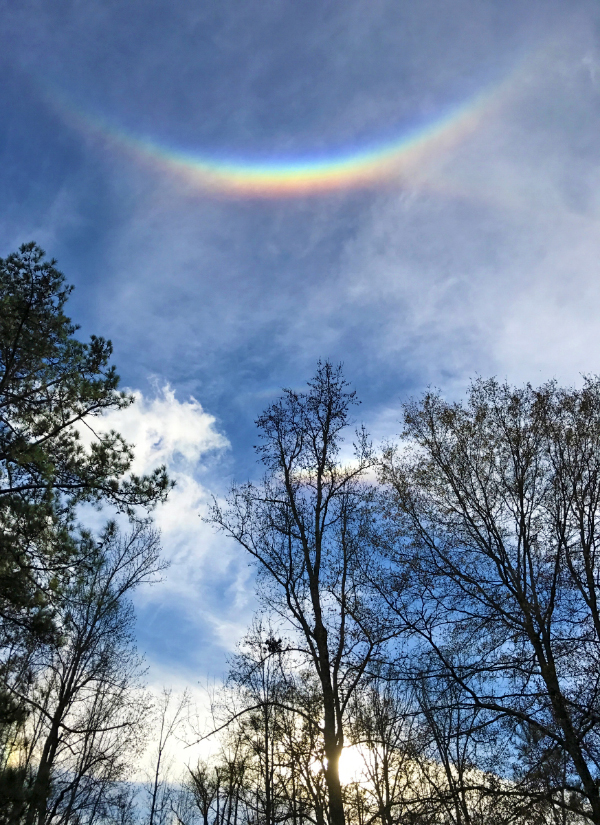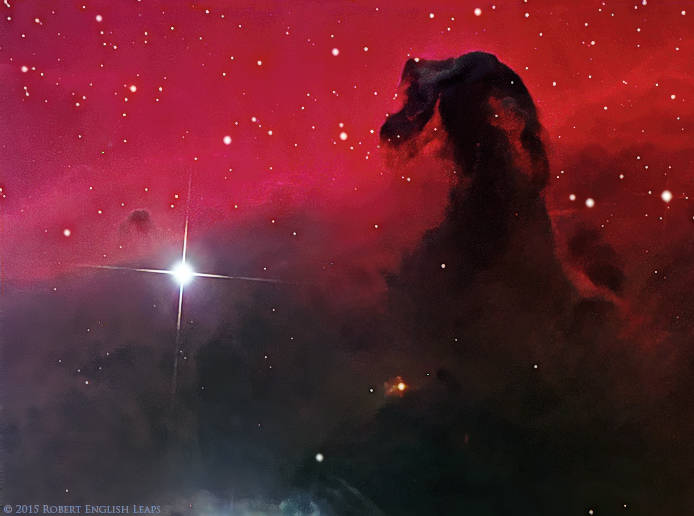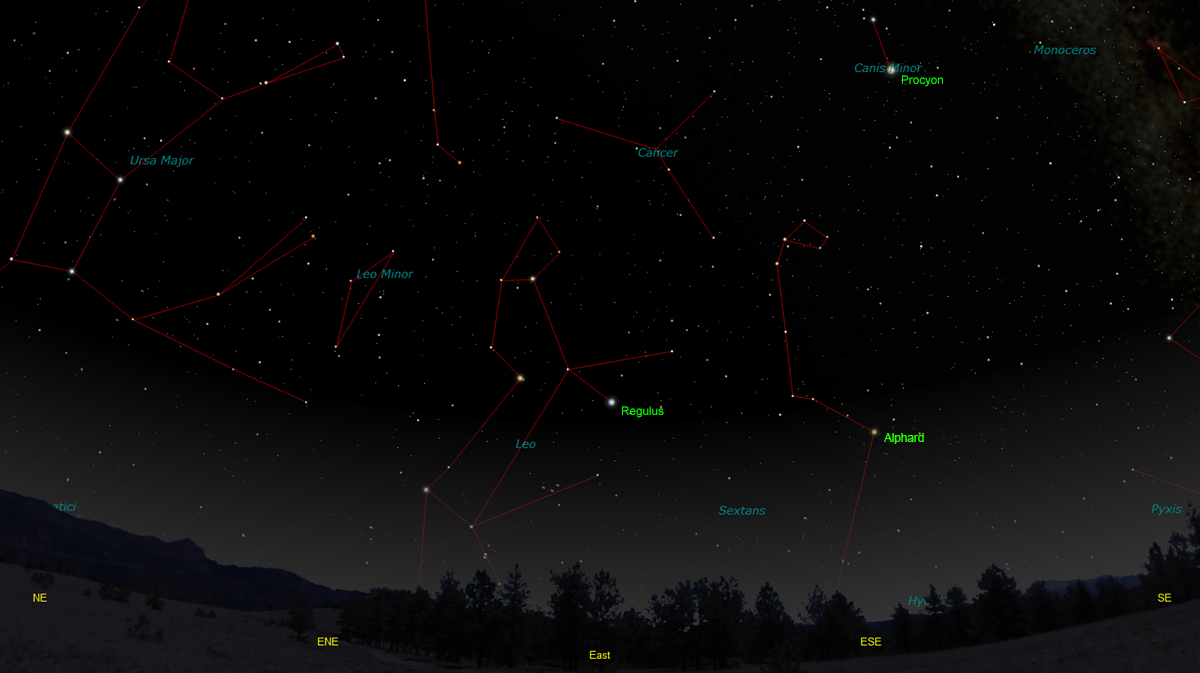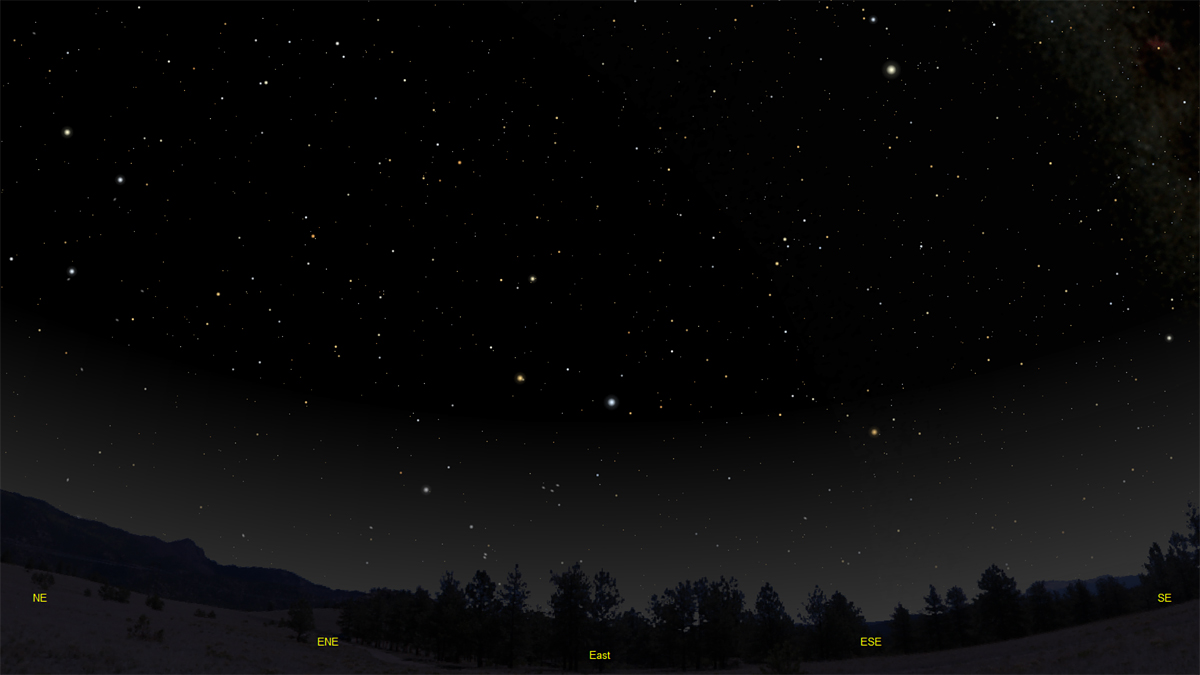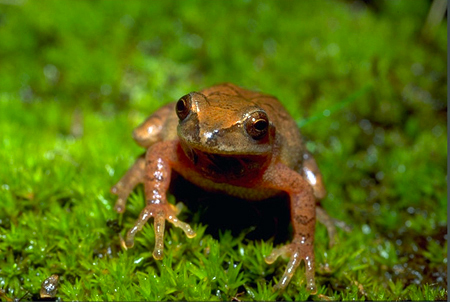The purpose of this feature is to give scout leaders, educators and naturalists an idea of some of the natural events coming up each month. We will try to cover a variety of natural events ranging from sky events to calling periods of amphibians, bird and mammal watching tips, prominent wildflowers and anything else that comes to mind. We will also note prominent constellations appearing over the eastern horizon at mid-evening each month for our area for those who would like to learn the constellations. If you have suggestions for other types of natural information you would like to see added to this calendar, let us know! Note: You can click on the hyperlinks to learn more about some of the featured items. To return to the Calendar, hit the "back" button on your browser, NOT the "back" button on the web page. All charts are available in a "printer friendly" mode, with black stars on a white background. Left clicking on each chart will take you to a printable black and white image. Please note that images on these pages are meant to be displayed at 100%. If your browser zooms into a higher magnification than that, the images may lose quality. Though we link book references to nationwide sources, we encourage you to support your local book store whenever possible.
Notes and Images From January 2017 Some of our best natural experiences occur close to home. On December 7th, just after dark, Andrea was driving up to where we park our cars at the farm. As she pulled in, she saw a Barred Owl perched about 15 feet off the ground in a small White Ash. Knowing that I was inside and not wanting to disturb the owl, she telephoned me before cutting off the engine or dimming the headlights. We worked out a plan to try to get an image, knowing that to approach an owl at night without making it fly is not easy. We decided she would back up about 10 feet so that the owl was not directly in the headlight beams. She left the headlights and engine on, then crept up to the house while I hurriedly put together an arrangement to photograph the owl. I then walked slowly down to the car, not knowing if the owl would still be there. Amazingly, it was still there, and I eventually got to within about thirty feet of it before it flew. Manual focusing was very tough, because the owl was only indirectly illuminated, and very faint in the viewfinder. The light was much too faint for autofocusing. Out of all of the images, only one image was in crisp focus, and luckily it was one of the close shots. The owl flew after a couple more images, but only to another tree about 100 feet away. I left it to resume its hunt.
Barred Owls are relatively common in our area, but though we have had good looks at Great Horned Owls, Eastern Screech-Owls and Barn Owls at our farm, we had previously only heard our Barred Owls. The "Who cooks for you? Who cooks for You-all?" call of the Barred Owl is familiar to most of us who spend time outdoors. These owls are capable of making all kinds of incredible sounds, and in March and April it's not uncommon to hear the scratchy upward-slurred begging call of the young owls. Barred Owls are often seen during the day. The muted grays and browns of this species make it extremely well camouflaged and many a hiker has suddenly noticed a Barred Owl not over 20 feet away, calmly watching them from a nearby branch. When I used to run at the Warner Parks, I sometimes saw them directly over the road, watching walkers and joggers pass beneath them. We've seen Barred Owls across the state from the shore of the Mississippi River to the eastern mountains. Prey includes a wide variety of small mammals, some birds, frogs, lizards, small snakes, salamanders, fish and invertebrates.
On December 12th we drove down to Chattanooga, Tennessee to do a Tennessee Naturalist Program. The program was at Audubon Acres, a beautiful 130 acre sanctuary that serves as the headquarters for the Chattanooga Audubon Society. Our program was scheduled to begin at 4:00pm, and we arrived early to scout the trail for a night hike we would be doing later that evening. A warm front was making its way into the area and the sky was laced with high cirrus clouds. About 3:30pm we looked up to see a beautiful circumzenithal arc directly overhead. I didn't have a camera with me other than my iphone, but no image can truly capture the beauty of these arcs. When viewed with the naked eye, they have an ethereal quality to them. The colors appear to wax and wain as the ice crystals that form them drift with the high altitude winds. As the name implies, circumzenithal arcs are arcs around the zenith, the point directly overhead. Also faintly visible were parts of the 46 degree tangential arc. This is an arc around the Sun that just touches the lower portion of the circumzenithal arc and can be faintly seen in the image extending to the right of the brighter circumzenithal arc. A part of the 22 degree halo can be seen through the branches near top of the tree in the center of the image. The Sun is mostly hidden behind the trunk of this tree. The arcs were actually more visible to the eye than the camera. If you want to see these arcs, always, always check the sky overhead if you see faint wispy cirrus clouds in the sky. Often these cirrus clouds precede a warm front during the winter months. An hour or two before sunset seems like a good time to see the arcs. Conditions for arcs may be particularly favorable if you see "sun dogs," bright colored patches of sky 22 degrees on each side of the Sun. The most common arc around the Sun (or Moon) is the 22 degree halo. But don't forget to look overhead. There is some rather nifty free software out there if you want to simulate arc phenomena. One of these is HaloSim3, which can be downloaded from the Atmospheric Optics site. We have not yet tried out this software, but we plan on trying it out soon and we'll let you know how it works for us. We later had a wonderful night hike at Audubon Acres and had a great look at a Barred Owl. The sky show continued as well, with a bright corona around the full Moon. Many thanks to the Audubon Acre staff for all of their hospitality and a very memorable evening.
Sky Events for February 2017:
Earth is at perihelion, nearest the Sun, on January 4th. Evening Sky: Bright Venus sets in the southwest around 8:30pm at the beginning of the month. It will reach greatest elongation from the Sun on January 12th. Look for pretty pairings of Venus and the crescent Moon early in the month. Mars makes its way from Aquarius into Pisces this month. Look for the red planet above and to the left of Venus. The color contrast between Mars and Venus, is striking! Morning Sky: Jupiter rises about 12:36am CST at the beginning of the month in Virgo. Saturn is in Ophiuchus this month. It rises about 5:25CST at the beginning of the month. Look for it low in the southeast before sunrise. Mercury will become visible below and to the left of Saturn before sunrise around January 7th. It will reach greatest elongation from the Sun on January 19th. A good time to begin looking for it is about 45 minutes before sunrise. A flat southeastern horizon will help, as will binoculars. Constellations: The views below show the sky looking east at 10:00pm CST on January 8th. The first view shows the sky with the constellations outlined and names depicted. Star and planet names are in green. Constellation names are in blue. The second view shows the same scene without labels. Ursa Major, the Great Bear, has now cleared the horizon in the northeast. The bright stars of Leo, the Lion, are visible now. Hydra, the Water Serpent, rears its head menacingly. Hydra's brightest star Alphard is known as "The Solitary One" because of its somewhat isolated location from other bright stars. Canes Venatici, the Hunting Dogs, also makes its appearance just above the northeast horizon. Among the fainter constellations visible in the east are Leo Minor, the Small Lion, Cancer, the Crab, and Sextans, the Sextant. Look below Pollux and see if you can spot the faint glow of M44, the "Beehive Cluster." This cluster is located in Cancer, the Crab. To the south, the brilliant stars of Orion and Canis Major are dazzling. This is a great time to see the Orion Nebula, Messier 42, in a small telescope or binoculars. If you are in clear dark moonless skies and have a hydrogen beta nebula filter, it's a good time to search for the elusive Horsehead Nebula, located near the lowest star in Orion's belt. On Learning the Constellations: We advise learning a few constellations each month, and then following them through the seasons. Once you associate a particular constellation coming over the eastern horizon at a certain time of year, you may start thinking about it like an old friend, looking forward to its arrival each season. The stars in the evening scene above, for instance, will always be in the same place relative to the horizon at the same time and date each January. In particular, learn the brightest stars (like Regulus and Procyon in the above scene), for they will guide you to the fainter stars. Once you can locate the more prominent constellations, you can "branch out" to other constellations around them. It may take you a little while to get a sense of scale, to translate what you see on the computer screen or what you see on the page of a book to what you see in the sky. Look for patterns, like the stars of Leo. The earth's rotation causes the constellations to appear to move across the sky just as the sun and the moon appear to do. If you go outside earlier than the time shown on the charts, the constellations will be lower to the eastern horizon. If you observe later, they will have climbed higher. As each season progresses, the earth's motion around the sun causes the constellations to appear a little farther towards the west each night for any given time of night. If you want to see where the constellations in the above figures will be on February 8th at 10:00pm CST, you can stay up till 12:00am CST on the January 8th and get a preview. The westward motion of the constellations is equivalent to two hours per month. Recommended: Sky & Telescope's Pocket Star Atlas is beautiful, compact star atlas. A good book to learn the constellations is Patterns in the Sky, by Hewitt-White. You may also want to check out at H. A. Rey's classic, The Stars, A New Way to See Them. For skywatching tips, an inexpensive good guide is Secrets of Stargazing, by Becky Ramotowski. A good general reference book on astronomy is the Peterson Field Guide, A Field Guide to the Stars and Planets, by Pasachoff. The book retails for around $14.00. The Virtual Moon Atlas is a terrific way to learn the surface features of the Moon. And it's free software. You can download the Virtual Moon Atlas here. Cartes du Ciel (described in the monthly notes above) is a great program for finding your way around the sky. It is also free, and can be downloaded here. Apps: We really love the Sky Safari 5 Pro. It is available for both iOS and Android operating systems. There are three versions. The Pro is simply the best astronomy app we've ever seen. The description of the Pro version reads, "includes over 27 million stars, 740,000 galaxies down to 18th magnitude, and 620,000 solar system objects; including every comet and asteroid ever discovered." For upcoming events, the Sky Week application is quite nice. Available for both I-phone and Android operating systems.A nother great app is the Photographer's Ephemeris. Great for finding sunrise, moonrise, sunset and moonset times and the precise place on the horizon that the event will occur. Invaluable not only for planning photographs, but also nice to plan an outing to watch the full moon rise. Available for both androids and iOS.
Amphibians: A lot of things happen with amphibians in January. To see them, though, you have to be out in the sort of weather that makes most people stay indoors. The trick is to go out on mild (50 degrees Fahrenheit or warmer) rainy nights. For safety, it is important that you have another person with you to watch for traffic as you slowly drive the back roads, looking for things that cross the road in front of you. Make frequent stops to listen for calling frogs. In January, both Spring Peepers and Upland Chorus Frogs are not uncommon, and Wood Frogs have their short-lived breeding choruses in woodland ponds. Southern Leopard Frogs are also sometimes calling on mild January nights. We have seen Northern Cricket Frogs, Green Frogs, American Bullfrogs and American Toads foraging in January. And just about anything is possible. On January 22, 1999, we found an Eastern Spadefoot out in the stormy weather. That same day a tornado ripped through Clarksville, Tennessee, doing much damage to the Austin Peay campus. January is an exciting time of year to look for herps! This is also the time to look for Tiger Salamander and Streamside Salamander egg masses. Tiger Salamanders like to deposit their egg masses on the vegetation in shallow water in small ponds and wetlands. Streamside Salamanders deposit their egg masses on the bottoms of rocks in streams. If you are looking for salamanders, always remember to carefully replace any stones you pick up exactly where you found them. Recommended: The Frogs and Toads of North America, Lang Elliott, Houghton Mifflin Co. Archives (Remember to use the back button on your browser, NOT the back button on the web page!)
Natural Calendar February 2016 Natural Calendar December 2015 Natural Calendar November 2015 Natural Calendar November 2014 Natural Calendar September 2014 Natural Calendar February 2014 Natural Calendar December 2013 Natural Calendar September 2013 Natural Calendar December 2012 Natural Calendar November 2012 Natural Calendar September 2012 Natural Calendar February 2012 Natural Calendar December 2011 Natural Calendar November 2011 Natural Calendar September 2011 Natural Calendar December 2010 Natural Calendar November 2010 Natural Calendar September 2010 Natural Calendar February 2010 Natural Calendar December 2009 Natural Calendar November 2009 Natural Calendar September 2009 Natural Calendar February 2009 Natural Calendar December 2008 Natural Calendar November 2008 Natural Calendar September 2008 Natural Calendar February 2008 Natural Calendar December 2007 Natural Calendar November 2007 Natural Calendar September 2007 Natural Calendar February 2007 Natural Calendar December 2006 Natural Calendar November 2006 Natural Calendar September 2006 Natural Calendar February 2006 Natural Calendar February 2003 Natural Calendar December 2002 Natural Calendar November 2002 Nature Notes Archives: Nature Notes was a page we published in 2001 and 2002 containing our observations about everything from the northern lights display of November 2001 to frog and salamander egg masses. Night scenes prepared with The Sky Professional from Software Bisque All images and recordings © 2016 Leaps.
|
|
